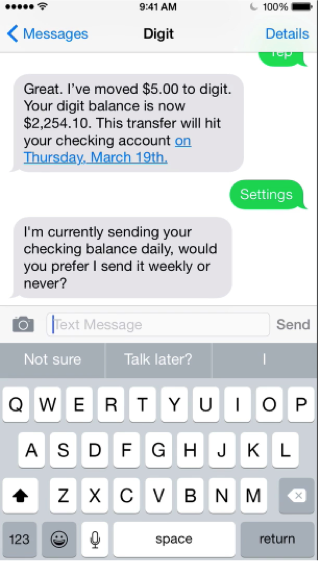Less Is More: Anticipatory Design to Simplify User Choice
Published on
September 06, 2016
By Luke
User Experience Architect
While on a call to the auto shop, the service representative asked me what time I’d like to schedule my appointment. She then replied with my name and my car information without my ever having given it to her. Magic? Clearly, she somehow cross-referenced my caller ID against her records, but she anticipated my needs based on connecting data she had been provided without my need to provide her all my details. Later that same day, after calling my credit card’s customer service and entering the obscure 16-digit card number and waiting 5 minutes for an agent to pick up, their first question was “What’s your credit card number?” I had just entered this information; why is she asking me for the credit card number again? Two experiences, one delightful and the other frustrating.
Strictly speaking, anticipatory design has been around for a while, but it’s just becoming more evident in our daily user experiences. It’s becoming even more integrated and expected in our experiences with websites and mobile apps. The overall intent is to anticipate the user’s decisions by simplifying a specific process and thus reducing the user’s overall cognitive load.
This trend of anticipatory design is meant to reduce the burden on users, by making decisions for users on their behalf. You may have encountered it online recently when you’ve been presented with a long form on a website that was surprisingly auto-filled with all your details it already knows about you. It saved you the effort of having to type this data and made it less likely for you to make an error.
As brand experiences, we are continually building relationships with our customers. We gather rich data about their preferences, details and interactions along the many touchpoints we have with users. We may even know their purchase history and search terms. By harnessing the data we already have, we can power decisions on behalf of our users to enhance their experiences with our brands. We no longer need to actually suggest, but rather the system can decide for the user. This is the anticipatory design shift.
Automated Decision Making
With users becoming overloaded with decisions in shopping and everyday tasks, the trend of reducing options and providing solutions is abundant in successful emerging brands.
Take, for example, the incredibly popular Nest thermostat. It is constantly monitoring my everyday heating and cooling habits, and then automatically adjusting the temperature of my home based on this historical usage and even adjusting to real-time changing energy prices. I no longer have to hassle with the thermostat. It knows me.

Click image for YouTube video.
Have you created your own playlist before? It can be a hassle and a time-consuming task sorting through your extensive music library to compile just the right thematic mix. Then came the anticipatory design solution, Pandora, which pioneered the ability to track the user’s song preferences and select songs based on its ultra-simple rating system of thumbs-up or down.

A new anticipatory finance app from Digit with text messaging artificial intelligence tracks your income and spending patterns. It evaluates opportunities to save small amounts of money to automatically set aside to build up your savings in an FDIC-insured account. By transferring this extra cash into a Digit savings account automatically, the user doesn’t have to think if they have enough to set aside or be disciplined enough to actively build their savings.

Implementing Anticipatory Design
The concept of anticipatory design was first coined by the CEO of Huge, Aaron Shapiro. He promotes that brands should use their existing data to anticipate what users are likely to want to do next. This modern, more assumptive style of anticipatory design will help users. He notes in his Fast Company article:
“Anticipatory design is fundamentally different: decisions are made and executed on behalf of the user. The goal is not to help the user make a decision, but to create an ecosystem where a decision is never made – it happens automatically and without user input.”
– Aaron Shapiro
To that end, he outlines the top five areas to bring your brand into anticipatory design.
- Consider your brand as a service. What service does that provide to your users?
- Provide your service digitally.
- Look for opportunities to deliver your service automatically.
- Develop and integrate the automated service.
- Establish clear lines of what are suitable criteria for making decisions on your users’ behalf.
While it is important to gather data on your users, applying critical analysis to that data is paramount. The ultimate goal should be a rather noble aspiration to simplify the tasks and interactions your users encounter. By providing automation of these tasks and reducing overall cognitive load, users will naturally build trust and affinity for your brand as it begins to differentiate you from other brand experiences.
So while users suffer from decision fatigue with the daily overload of choices, anticipatory design is a panacea that reduces the paralyzing confusion of choices. And we as brands must be aware – not assume – but rather anticipate user needs based on the data customers are willing to provide to us. We must treat this data with care to provide helpful solutions for our users to build their trust in our brand that reduces their decision burden. With this trust, we can anticipate that we will build loyalty and foster relationships with our customers.
TL;DR
Resources
The Next Big Thing in Design? Less Choice
Fast CompanyNest Thermostats Can Now React to Changing Energy Prices
Fortune8 Ways to Combat Decision Fatigue
The Huffington PostNest
NestPandora
PandoraDigit
Digit